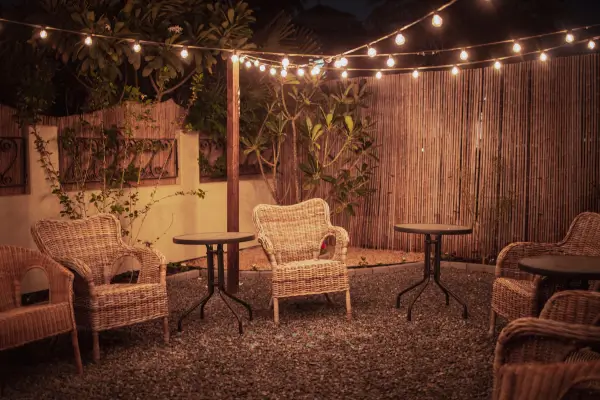Creating a DIY greenhouse with recycled wood and plastic is a smart way to grow plants all year while cutting down on waste.
This type of structure lets you control temperature, light, and moisture — perfect for flowers, herbs, or vegetables.
Using reclaimed materials makes the project budget-friendly and better for the environment.
It also allows you to customize the size and design based on your space and gardening needs.
In this guide, you’ll learn step by step how to build a durable, functional, and low-cost greenhouse at home.
Why Build a Greenhouse Using Recycled Materials?
1. Cost-Effective
Using recycled wood and plastic reduces costs significantly compared to purchasing new materials.
2. Eco-Friendly
Repurposing materials helps reduce landfill waste and promotes sustainable building practices.
3. Year-Round Gardening
A greenhouse allows you to grow crops regardless of the season, protecting plants from frost and excessive heat.
4. Customizable Size and Design
With DIY construction, you can adjust the dimensions to fit your space and gardening needs.
Materials and Tools Needed
Before starting, gather the following materials:
Materials:
- Recycled wood (pallets, old furniture, or leftover construction materials)
- Plastic sheeting (clear polyethylene or repurposed plastic panels)
- Nails, screws, and brackets
- Hinges (for a door opening)
- Wood stain or sealant (to protect against moisture)
- Concrete blocks or bricks (for stability at the base, optional)
Tools:
- Saw (hand saw or circular saw)
- Drill and screwdriver
- Measuring tape
- Hammer
- Staple gun (for securing plastic sheeting)
- Level (to ensure an even structure)
Now, let’s go through the step-by-step instructions to build your greenhouse.
Step-by-Step Guide to Building a DIY Greenhouse
Step 1: Choose a Location
- Select a flat, sunny area in your yard or garden.
- Ensure it has good drainage and protection from strong winds.
- If possible, place the greenhouse near a water source for easy irrigation.
Step 2: Construct the Base and Frame
- Arrange recycled wood beams to create a rectangular base.
- Use concrete blocks or bricks to elevate the structure slightly for stability.
- Assemble vertical wooden posts at each corner and secure them with screws.
- Add horizontal beams at the top to form a sturdy frame.
Step 3: Build the Walls
- Attach wooden slats or repurposed wooden panels to the frame, leaving space for a door.
- If using pallet wood, arrange and nail it together to create solid walls.
- For ventilation, leave small gaps between panels or add vents near the roof.
Step 4: Install the Roof Structure
- Use angled wooden beams to create a sloped roof to allow rainwater runoff.
- Ensure the structure is sturdy enough to support the weight of plastic sheeting.
Step 5: Attach the Plastic Sheeting
- Cut the recycled plastic sheeting to size, ensuring full coverage of the frame.
- Secure the plastic with a staple gun or wooden battens.
- Overlap seams and use weather-resistant tape to prevent gaps.
- If using repurposed plastic panels, screw them directly onto the wooden frame.
Step 6: Add a Door and Ventilation
- Construct a simple wooden door frame and cover it with plastic sheeting.
- Attach hinges and install a latch or handle for easy access.
- For airflow, create adjustable ventilation panels or install a small fan.
Tips for Maintaining Your DIY Greenhouse
1. Regularly Check for Structural Integrity
- Inspect the wood for rot and treat it with weather-resistant sealant.
- Tighten screws and nails to keep the structure secure.
2. Monitor Temperature and Humidity
- Use a thermometer and hygrometer to track growing conditions.
- If needed, open ventilation panels to prevent overheating.
3. Keep Plastic Clean and Secure
- Wipe down plastic sheeting regularly to maximize sunlight penetration.
- Replace any torn or brittle plastic to maintain insulation.
4. Use the Space Efficiently
- Install shelves and hanging racks for vertical gardening.
- Use raised garden beds or containers to organize plants.
Common Mistakes to Avoid
1. Choosing the Wrong Location
- Ensure the site receives adequate sunlight (at least 6 hours per day).
- Avoid placing it in low-lying areas where water can accumulate.
2. Not Securing the Plastic Properly
- Loose plastic can flap in the wind and get damaged quickly.
- Use wooden battens or sturdy staples to keep it in place.
3. Poor Ventilation
- Without proper airflow, excess humidity can lead to mold and plant diseases.
- Install adjustable vents or manually open the door to regulate temperature.
4. Using Untreated Wood
- Recycled wood must be sealed or painted to prevent rot and insect damage.
- Avoid wood that has been chemically treated, as it can leach harmful substances into the soil.
Building a DIY greenhouse with recycled materials is more than a garden upgrade — it’s a step toward sustainable living.
With just a few repurposed items, you create a space that protects your plants, saves money, and reduces environmental impact.
Whether you grow herbs for your kitchen, flowers for your home, or vegetables for your table, the rewards go far beyond harvest.
Every season becomes an opportunity to nurture life, learn, and reconnect with the rhythm of nature.
Start your project today and transform your outdoor space into a thriving, eco-friendly retreat.



